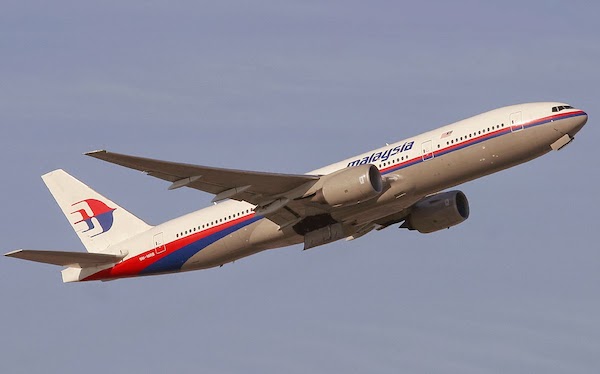
A year into the investigation of missing Malaysia Airlines Flight MH370 and authorities are no closer to finding it or solving what actually occurred.
Relatives of the missing passengers are now taking matters into their own hands, determined to solve one of aviation’s biggest mysteries themselves.

BYPASS THE CENSORS
Sign up to get unfiltered news delivered straight to your inbox.
You can unsubscribe any time. By subscribing you agree to our Terms of Use
Latest Video
The Guardian reports:
A year ago, on 8 March 2014, an American schoolteacher named Sarah Bajc sat in her Beijing apartment waiting for the plane carrying her boyfriend Philip to land. Her anxiety was growing; there had been sketchy news reports that a plane had vanished from radar screens, so she was hitting refresh on a flight-tracker website. Refresh. Delayed. Refresh. Delayed. Refresh. Missing.
At the same time, an Australian businessman and part-time private investigator named Ethan Hunt was flying from Dubai to Paris. The first reports mistakenly said the missing plane was travelling from the Far East to Europe, so Ethan’s niece, frantic with worry, was repeatedly emailing him. When Ethan landed in Paris and saw the panicky messages, he caught a taxi to his hotel and turned on the TV. “And all I did after that was watch CNN,” he tells me.
The news reports were bizarre. The plane, MH370, had taken off at 12.41am and been on its scheduled path from Kuala Lumpur to Beijing, when it just disappeared. No distress signal had been sent. A Japan-bound pilot on another Boeing 777 said he had contacted MH370 at 1.30am, to ask if it had entered Vietnamese airspace, and had received “only static and mumbling in return”.
In the scramble for information, the Malaysian authorities made odd, contradictory statements. On 11 March, air force chief Tan Sri Rodzali Daud reportedly said the plane had last been detected at 2.40am near Pulau Perak, an island in the Malacca Strait – a massive detour: instead of travelling north to China, it had doubled back across Malaysia. Later that day, Daud denied he had said such a thing. The next day he said the last radar signal had been received at 2.15am from a different location, 200 miles north-west of Penang. The day after that, the time of the signal was amended to 2.30am.
On 15 March, the Malaysian prime minister, Najib Razak, announced that someone on board MH370 had shut down the communication systems and, after that, the plane had seemingly drifted for six hours, with all 239 passengers and crew incapacitated by oxygen starvation. Malaysian police raided the pilot’s home for clues: had he ditched the plane as some kind of political protest? He was a known supporter of the opposition leader. Meanwhile photographs had emerged of the co-pilot with his arm around young women he had allowed into the cockpit on previous flights. Could he be to blame?
The theories began to stack up: MH370 had landed on a Malaysian military base called Butterworth, had been hijacked by terrorists, or destroyed in a corporate insurance scam; it had been seized by Chinese or American operatives who wanted access to the 20 employees of a US tech company on board, manufacturers of microchips for the defence industry.
Millions of internet users tried to help, scouring satellite images in the hope of spotting the plane. I was one of them. But after 10 minutes of looking at grainy shots of ocean, I got bored and gave up.
“I’m no expert,” wrote Courtney Love on her Facebook page, “but up close this does look like a plane and an oil slick. It’s like a mile away from Pulau Perak, where they ‘last’ tracked it 5°39’08.5”N 98°50’38.0”E but what do I know?” Investigators were urged to check out oil slicks and debris, white specks floating in the ocean off Malaysia, Vietnam, Australia. The official search widened to cover 2.24m square nautical miles, or 1.5% of the planet – impossible, unfathomable distances.
During these confused and hysterical days, Sarah Bajc was frequently interviewed on television. On 10 March, a CBS news reporter spoke to her at her flat in Beijing. She cried and said, “The clothes in his closet are the worst. I open the closet and it smells like him.” She and Philip Wood, an IBM executive, had been dating for three years, having met in a pub where they’d both gone to listen to live music. They were about to move together to Kuala Lumpur. “Until there’s proof Philip is dead,” she said, “I refuse to believe it. If anybody could survive something like this, it’s him.”
In his hotel room in Paris, Ethan Hunt watched Sarah crying on TV and felt a compulsion to track her down, to help. How could a plane simply vanish in the 21st century? It was impossible, but this was the only scenario the authorities had.
This is the story of what happened when Ethan, Sarah and other MH370 relatives finally made contact – six very different characters, scattered across the planet – and set out with the scantest resources to solve the most startling mystery in modern aviation history.


